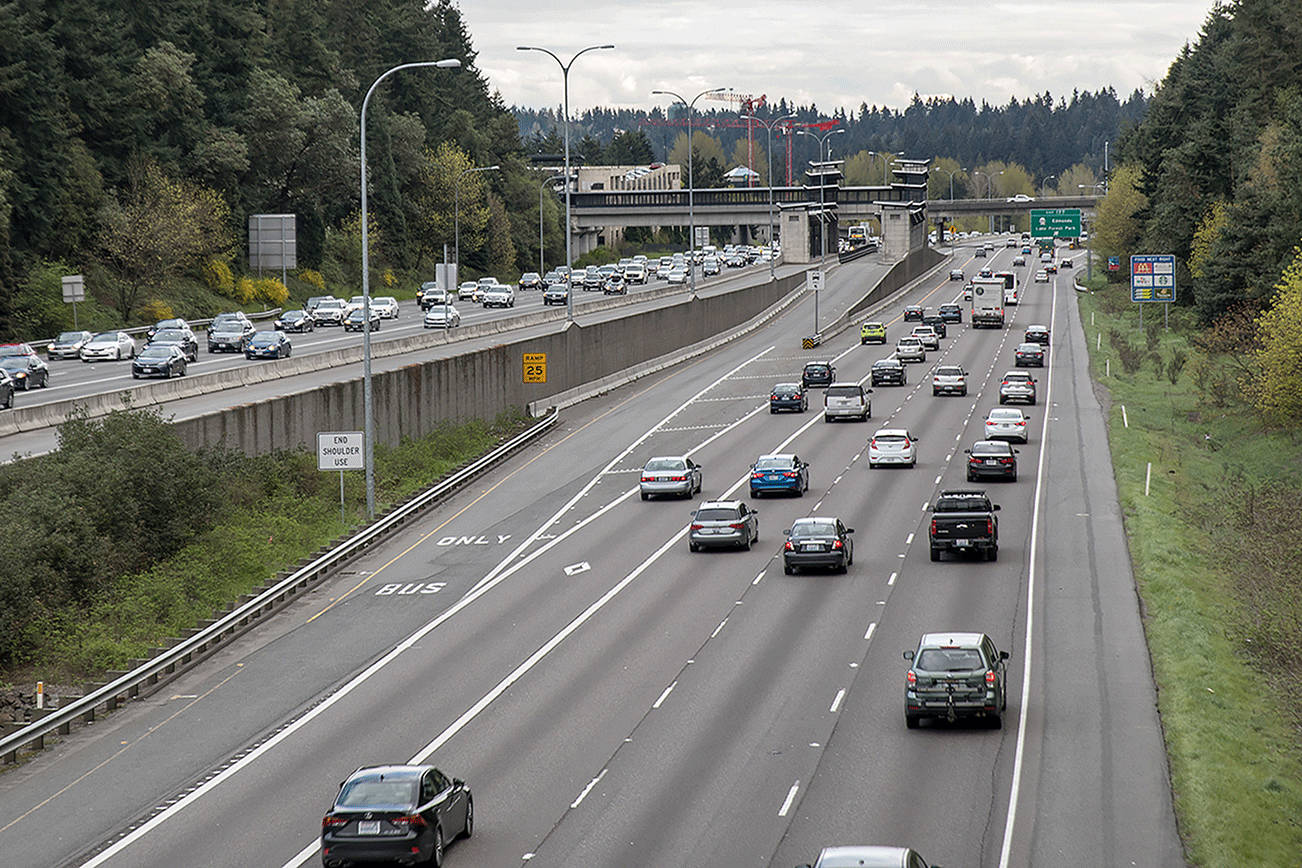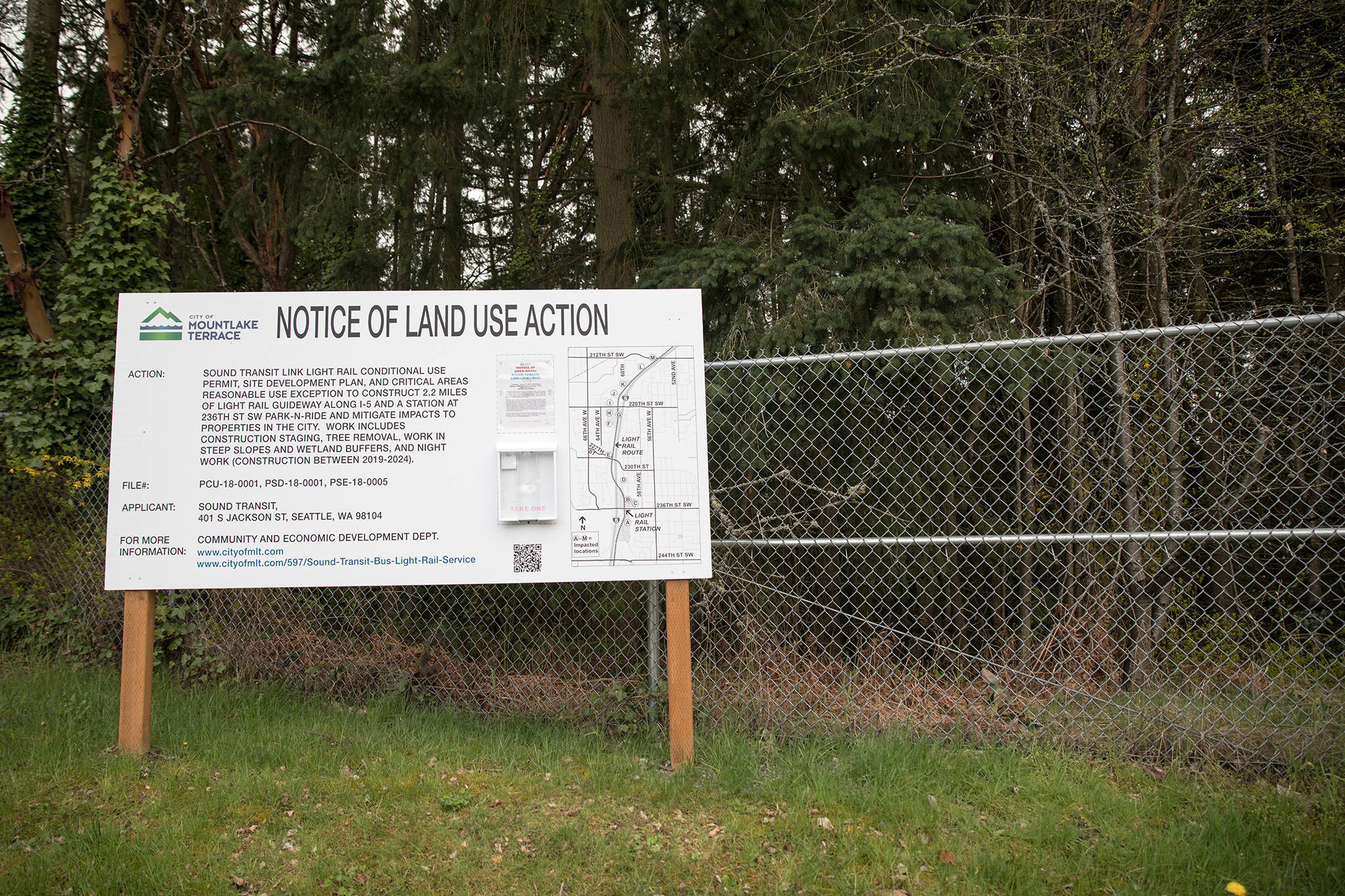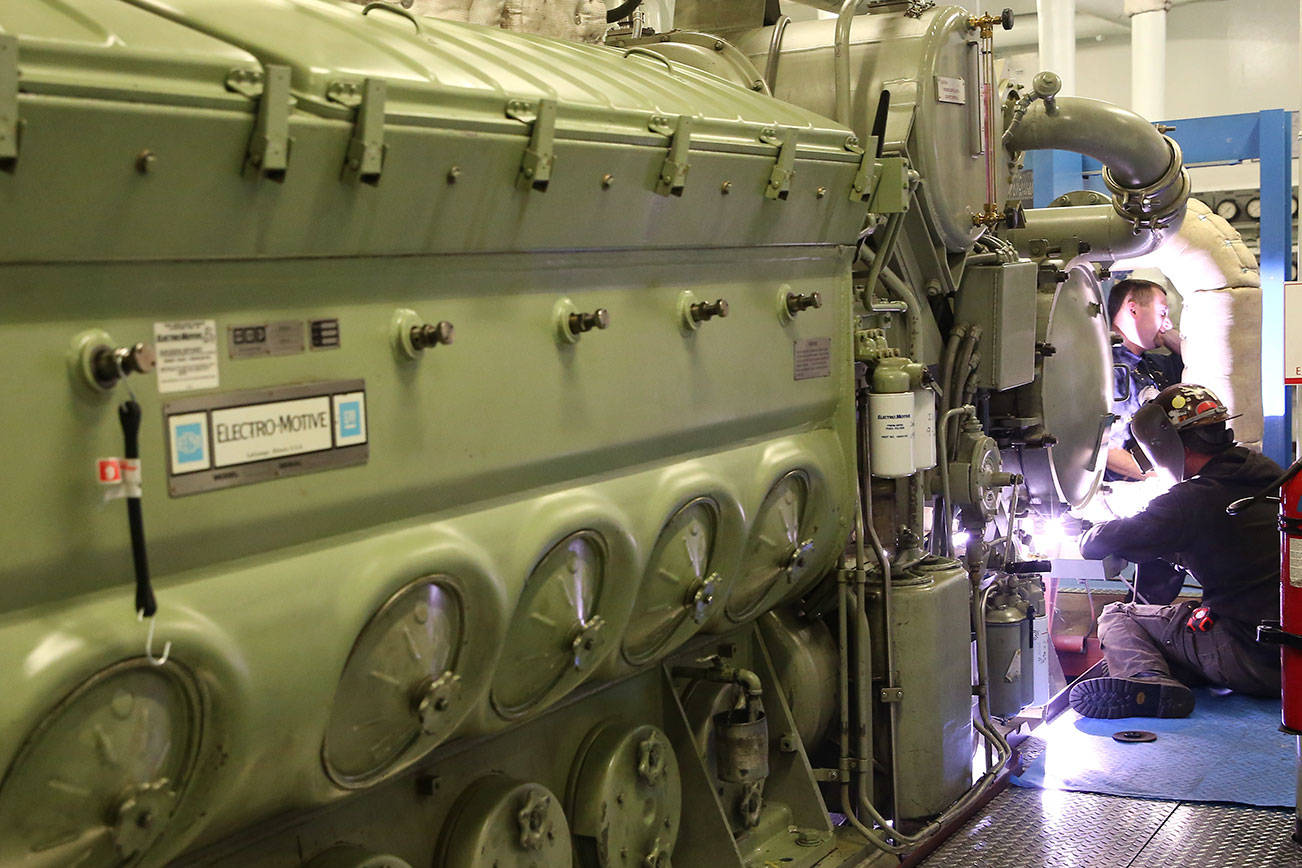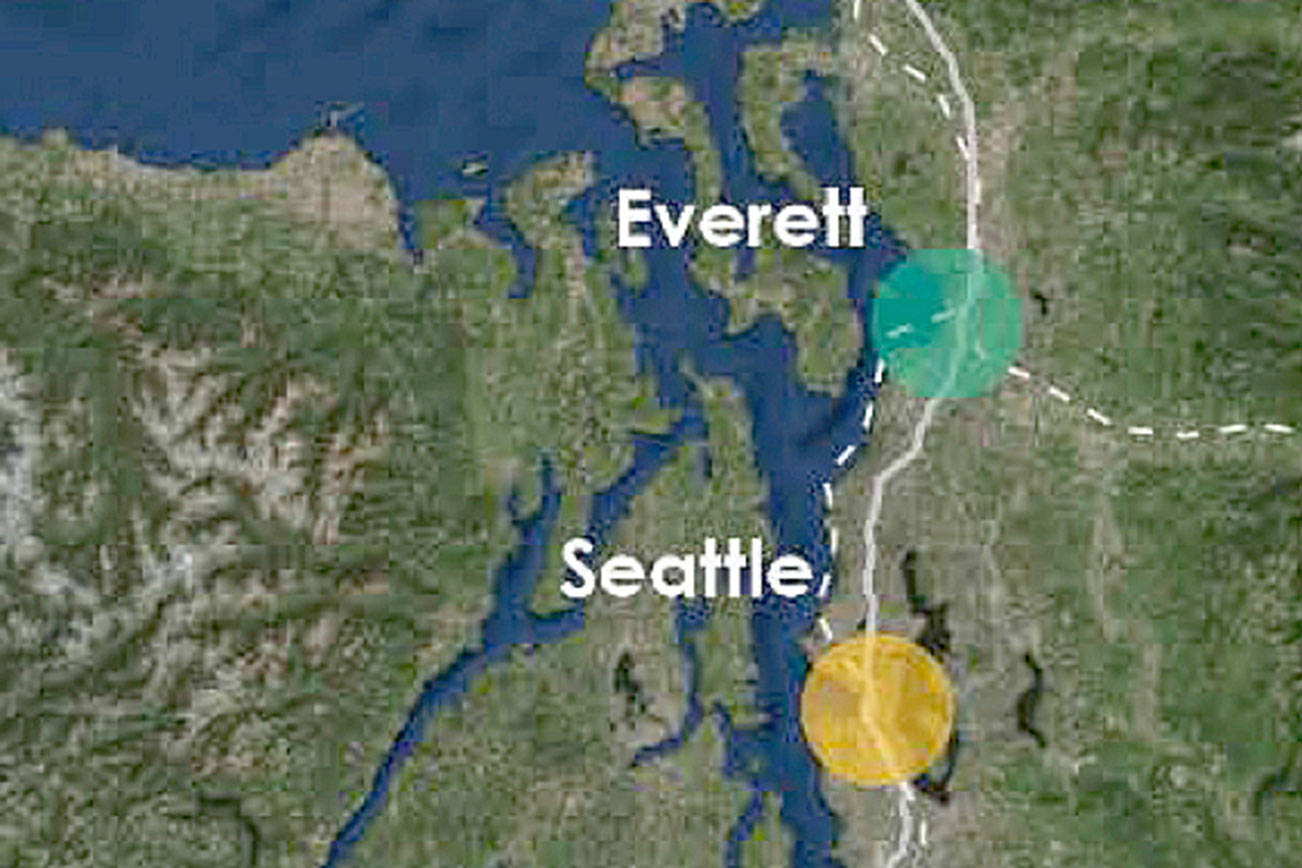LYNNWOOD — The drive along I-5 from Northgate to Lynnwood is about to get a little less green — at least a few years.
To clear space for the 8.5-mile Lynnwood Link extension, Sound Transit expects to cut down approximately 5,300 trees along the future light rail path that hugs the interstate. The transit agency plans to replace those lost by replanting more than 20,000.
“The visual impact is going to be a change, absolutely,” said Karl Almgren, manager for Lynnwood’s City Center Program. “But it is for very important regional mass transit that was approved by voters.”
Approximately 75 percent of the tree removal will happen on land owned by the Washington State Department of Transportation, according to Sound Transit. Work to clear vegetation is set to begin in late April and will last about six months. Most of the replanting will occur once the light rail project is complete.
The replacement trees will be about 3 feet tall, according to Sound Transit. More than half, 53 percent, will be deciduous.
In Mountlake Terrace, about 2,300 trees will be taken out, and then replaced by 7,500.
“It’s an iconic tree corridor along I-5 traveling through Mountlake Terrace,” City Manager Scott Hugill said.
Down the road in Lynnwood, about 1,200 trees will be replanted after 1,000 or so are removed. In Seattle, a little more than 6,000 trees will replace the 580 taken out, and in Shoreline, about 5,900 are to replace about 1,400 cleared. Removal will begin in Seattle along 5th Avenue between NE 130th and 145th streets.
Replacement numbers depend on the size of the existing trees and regulations in each city, according to Rod Kempkes, executive project director for Lynnwood Link.
One heavily impacted spot will be north of the Mountlake Terrace Transit Center, where the light rail path will cross I-5 from the east side to the west side, Kempkes said.
Plans there call for clearing most of the trees between the houses and interstate. A noise wall will be eventually installed in most of that area, according to plans.
“Research shows that evergreen tree belts can provide some limited reduction of traffic noise,” said Andrew Brown, an assistant professor in the Department of Speech and Hearing Sciences at the University of Washington, in an email. “The amount of noise reduction depends on the dimensions — length, depth, height — planting density, species, and even age of the trees. Dense and deep belts of trees with thick limb coverage to the ground may provide several decibels of noise reduction — amounting to a clear decrease in perceived loudness.”
WSDOT is partnering with Sound Transit to monitor and care for the young trees for 13 years, a decade longer than the standard time, according to Sound Transit.
“We knew trees were going to be a big deal,” Kempkes said. “So we did a massive survey of every tree that was over 4 inches in diameter.”
The wood from the cut trees becomes property of the contractor and can be sold for timber, mulch or other wood-by products. Sound Transit said this will reduce the cost of the project.
Closer to the light rail track, shorter trees that will grow no more than 25 feet high, will be planted. Farther away, larger trees will be used.
Some noise walls along I-5 are being moved to make room for light rail. During construction temporary sound barriers will be installed.
The extension, which will bring light rail to Snohomish County, is set to open in July 2024. Early work set to start this spring also includes building demolitions and utility relocation. Major construction is scheduled to start in summer and to be mostly complete in 2022. After that, the agency plans extensive testing.
Sound Transit is hosting open houses for the extension. The first is scheduled from 6 to 8 p.m. Thursday at the Nile Shrine Golf Center, 6601 244th St. SW, Mountlake Terrace. The second is set for a week later, from 6 to 8 p.m. April 25 at the Lynnwood Convention Center, 3711 196th St. SW.
Lizz Giordano: 425-374-4165; egiordano@heraldnet.com; Twitter: @lizzgior.







